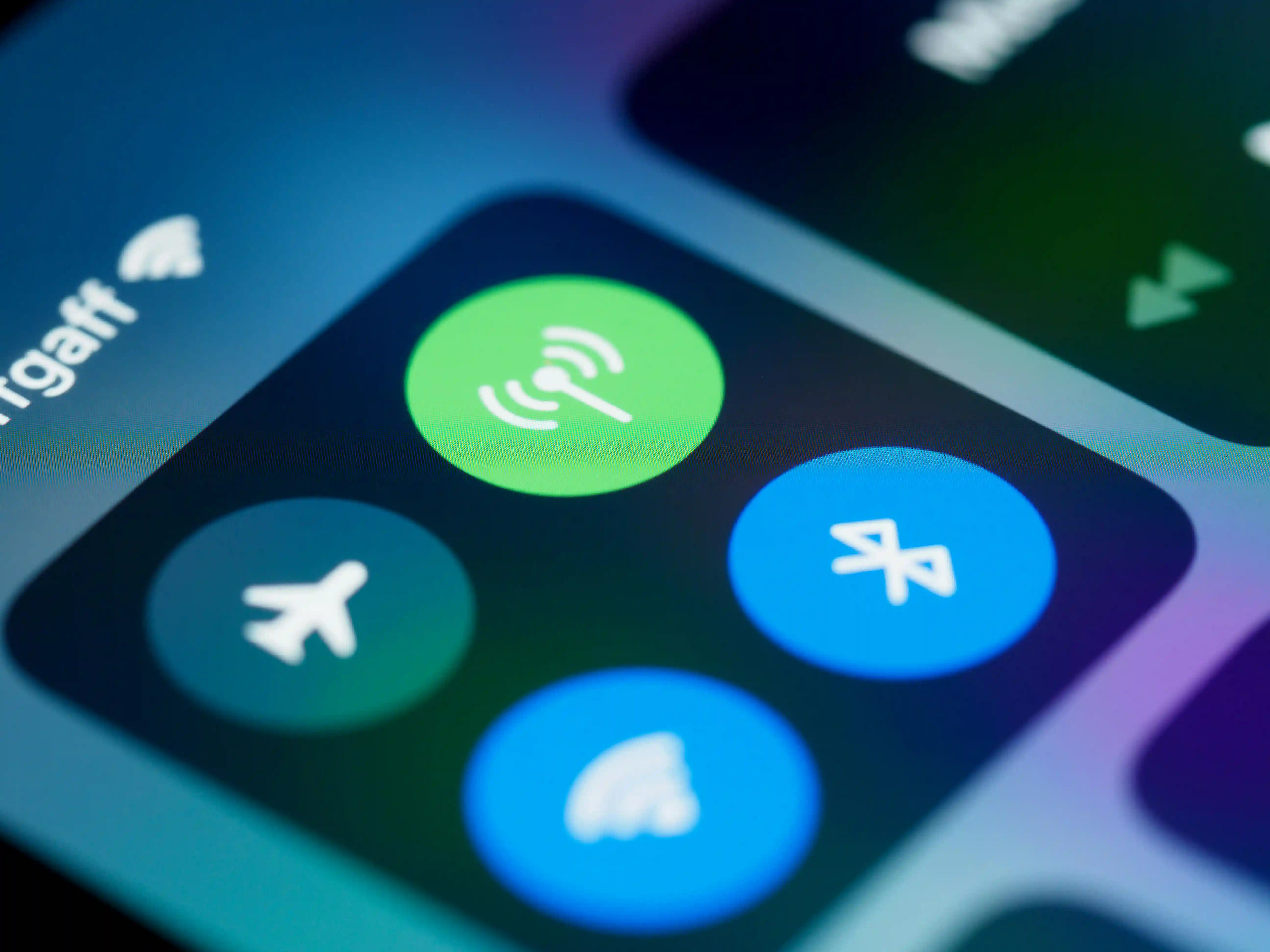eSIM Tips
Disadvantages of Airplane Mode
Discover the disadvantages of airplane mode and how they impact your travel connectivity. Our comprehensive guide explores smarter alternatives for staying connected abroad.
Airplane mode, that familiar feature on our smartphones and tablets, often feels like a necessary evil when we're jetting off to our next destination. While it's crucial for complying with aviation regulations, this connectivity-killing function comes with its fair share of disadvantages that might surprise even the most frequent flyers.

What Are the Disadvantages of Airplane Mode?
1- Missed Communication Opportunities
The most obvious downside of airplane mode is the communication blackout it creates. Important emails, urgent messages, or time-sensitive notifications won't reach you until you're back online. For business travelers or those expecting crucial updates, this radio silence can be particularly problematic.
2- Navigation Challenges
GPS functionality is often disabled in airplane mode, potentially leaving you stranded if you're relying on map applications upon landing. This can be especially frustrating when arriving in an unfamiliar city and needing immediate directions.
3- Lost Tracking Capabilities
For those who use smart devices to monitor fitness or health metrics, airplane mode interrupts data collection. Your step count, heart rate, or sleep patterns won't be recorded, leaving gaps in your personal analytics.
4- Syncing Disruptions
Cloud-based services and apps that require constant internet connectivity cease to function in airplane mode. This means your documents, photos, or other data won't sync until you're back online, potentially leading to version control issues or data loss if your device encounters problems mid-flight.
5- Limited Entertainment Options
While many airlines now offer in-flight Wi-Fi, activating airplane mode cuts you off from streaming services, online games, and social media platforms that require an internet connection. This can make long-haul flights feel even longer for the digitally dependent traveler.
6- Reduced Device Functionality
Some apps and features on your device may not work properly or at all when in airplane mode. This includes features like AirDrop on iOS devices or certain background processes that rely on network connectivity.
7- Potential for Missed Alarms
While most modern smartphones will still sound alarms in airplane mode, some older devices or certain apps may not function as expected, potentially causing you to oversleep or miss important reminders.
8- Difficulty in Device Location
If your device is lost or stolen while in airplane mode, tracking services like Find My iPhone or Android Device Manager won't be able to locate it, complicating recovery efforts.
Roaming Charges and Airplane Mode
Roaming charges and airplane mode represent two sides of the international connectivity coin. When you cross borders, your phone eagerly connects to local networks, often triggering eye-watering fees for data usage, calls, and texts. Airplane mode acts as a digital fortress, shielding you from these charges by disabling all radio communications.
While effective, this blanket approach leaves you disconnected upon arrival, precisely when you need access to maps, translation apps, and travel information. Savvy international travelers now seek more nuanced solutions that balance connectivity with cost control, such as eSIMs or selective radio management. These approaches allow you to stay connected without fear of bill shock, ensuring you can navigate your destination with confidence from the moment you land.
eSIM and Airplane Mode
International travel often brings a connectivity conundrum: the moment you land, airplane mode becomes a digital barrier. While it safeguards against exorbitant roaming charges, it also cuts you off from essential navigation tools, communication channels, and real-time information.
eSIMs allow you to activate a local data plan instantly upon arrival, bypassing the need for physical SIM swaps or hunting down local providers. With a Global eSIM like Roamless, you can step off the plane and immediately access maps, translation apps, and travel information, all while maintaining your home number for incoming calls and messages. This technology effectively eliminates the connectivity gap that airplane mode creates, ensuring you remain plugged into both your destination and your digital life. For frequent border-crossers and digital nomads, eSIMs offer a flexible, efficient solution that keeps pace with your global lifestyle, providing seamless connectivity without the traditional pitfalls of international mobile usage.
While airplane mode remains a necessary feature for air travel, understanding its limitations allows you to better prepare for its impact on your digital life. Consider downloading offline content, informing key contacts of your travel plans, and double-checking critical device functions before takeoff to mitigate these disadvantages. By doing so, you'll ensure a smoother transition between your connected and disconnected states as you traverse the globe.
Similar readings
Roamless eSIM works in 0 destinations
Fast mobile data. No speed limits. Hotspot-enabled. Multiple operators.
Airplane mode, that familiar feature on our smartphones and tablets, often feels like a necessary evil when we're jetting off to our next destination. While it's crucial for complying with aviation regulations, this connectivity-killing function comes with its fair share of disadvantages that might surprise even the most frequent flyers.

What Are the Disadvantages of Airplane Mode?
1- Missed Communication Opportunities
The most obvious downside of airplane mode is the communication blackout it creates. Important emails, urgent messages, or time-sensitive notifications won't reach you until you're back online. For business travelers or those expecting crucial updates, this radio silence can be particularly problematic.
2- Navigation Challenges
GPS functionality is often disabled in airplane mode, potentially leaving you stranded if you're relying on map applications upon landing. This can be especially frustrating when arriving in an unfamiliar city and needing immediate directions.
3- Lost Tracking Capabilities
For those who use smart devices to monitor fitness or health metrics, airplane mode interrupts data collection. Your step count, heart rate, or sleep patterns won't be recorded, leaving gaps in your personal analytics.
4- Syncing Disruptions
Cloud-based services and apps that require constant internet connectivity cease to function in airplane mode. This means your documents, photos, or other data won't sync until you're back online, potentially leading to version control issues or data loss if your device encounters problems mid-flight.
5- Limited Entertainment Options
While many airlines now offer in-flight Wi-Fi, activating airplane mode cuts you off from streaming services, online games, and social media platforms that require an internet connection. This can make long-haul flights feel even longer for the digitally dependent traveler.
6- Reduced Device Functionality
Some apps and features on your device may not work properly or at all when in airplane mode. This includes features like AirDrop on iOS devices or certain background processes that rely on network connectivity.
7- Potential for Missed Alarms
While most modern smartphones will still sound alarms in airplane mode, some older devices or certain apps may not function as expected, potentially causing you to oversleep or miss important reminders.
8- Difficulty in Device Location
If your device is lost or stolen while in airplane mode, tracking services like Find My iPhone or Android Device Manager won't be able to locate it, complicating recovery efforts.
Roaming Charges and Airplane Mode
Roaming charges and airplane mode represent two sides of the international connectivity coin. When you cross borders, your phone eagerly connects to local networks, often triggering eye-watering fees for data usage, calls, and texts. Airplane mode acts as a digital fortress, shielding you from these charges by disabling all radio communications.
While effective, this blanket approach leaves you disconnected upon arrival, precisely when you need access to maps, translation apps, and travel information. Savvy international travelers now seek more nuanced solutions that balance connectivity with cost control, such as eSIMs or selective radio management. These approaches allow you to stay connected without fear of bill shock, ensuring you can navigate your destination with confidence from the moment you land.
eSIM and Airplane Mode
International travel often brings a connectivity conundrum: the moment you land, airplane mode becomes a digital barrier. While it safeguards against exorbitant roaming charges, it also cuts you off from essential navigation tools, communication channels, and real-time information.
eSIMs allow you to activate a local data plan instantly upon arrival, bypassing the need for physical SIM swaps or hunting down local providers. With a Global eSIM like Roamless, you can step off the plane and immediately access maps, translation apps, and travel information, all while maintaining your home number for incoming calls and messages. This technology effectively eliminates the connectivity gap that airplane mode creates, ensuring you remain plugged into both your destination and your digital life. For frequent border-crossers and digital nomads, eSIMs offer a flexible, efficient solution that keeps pace with your global lifestyle, providing seamless connectivity without the traditional pitfalls of international mobile usage.
While airplane mode remains a necessary feature for air travel, understanding its limitations allows you to better prepare for its impact on your digital life. Consider downloading offline content, informing key contacts of your travel plans, and double-checking critical device functions before takeoff to mitigate these disadvantages. By doing so, you'll ensure a smoother transition between your connected and disconnected states as you traverse the globe.
Airplane mode, that familiar feature on our smartphones and tablets, often feels like a necessary evil when we're jetting off to our next destination. While it's crucial for complying with aviation regulations, this connectivity-killing function comes with its fair share of disadvantages that might surprise even the most frequent flyers.

What Are the Disadvantages of Airplane Mode?
1- Missed Communication Opportunities
The most obvious downside of airplane mode is the communication blackout it creates. Important emails, urgent messages, or time-sensitive notifications won't reach you until you're back online. For business travelers or those expecting crucial updates, this radio silence can be particularly problematic.
2- Navigation Challenges
GPS functionality is often disabled in airplane mode, potentially leaving you stranded if you're relying on map applications upon landing. This can be especially frustrating when arriving in an unfamiliar city and needing immediate directions.
3- Lost Tracking Capabilities
For those who use smart devices to monitor fitness or health metrics, airplane mode interrupts data collection. Your step count, heart rate, or sleep patterns won't be recorded, leaving gaps in your personal analytics.
4- Syncing Disruptions
Cloud-based services and apps that require constant internet connectivity cease to function in airplane mode. This means your documents, photos, or other data won't sync until you're back online, potentially leading to version control issues or data loss if your device encounters problems mid-flight.
5- Limited Entertainment Options
While many airlines now offer in-flight Wi-Fi, activating airplane mode cuts you off from streaming services, online games, and social media platforms that require an internet connection. This can make long-haul flights feel even longer for the digitally dependent traveler.
6- Reduced Device Functionality
Some apps and features on your device may not work properly or at all when in airplane mode. This includes features like AirDrop on iOS devices or certain background processes that rely on network connectivity.
7- Potential for Missed Alarms
While most modern smartphones will still sound alarms in airplane mode, some older devices or certain apps may not function as expected, potentially causing you to oversleep or miss important reminders.
8- Difficulty in Device Location
If your device is lost or stolen while in airplane mode, tracking services like Find My iPhone or Android Device Manager won't be able to locate it, complicating recovery efforts.
Roaming Charges and Airplane Mode
Roaming charges and airplane mode represent two sides of the international connectivity coin. When you cross borders, your phone eagerly connects to local networks, often triggering eye-watering fees for data usage, calls, and texts. Airplane mode acts as a digital fortress, shielding you from these charges by disabling all radio communications.
While effective, this blanket approach leaves you disconnected upon arrival, precisely when you need access to maps, translation apps, and travel information. Savvy international travelers now seek more nuanced solutions that balance connectivity with cost control, such as eSIMs or selective radio management. These approaches allow you to stay connected without fear of bill shock, ensuring you can navigate your destination with confidence from the moment you land.
eSIM and Airplane Mode
International travel often brings a connectivity conundrum: the moment you land, airplane mode becomes a digital barrier. While it safeguards against exorbitant roaming charges, it also cuts you off from essential navigation tools, communication channels, and real-time information.
eSIMs allow you to activate a local data plan instantly upon arrival, bypassing the need for physical SIM swaps or hunting down local providers. With a Global eSIM like Roamless, you can step off the plane and immediately access maps, translation apps, and travel information, all while maintaining your home number for incoming calls and messages. This technology effectively eliminates the connectivity gap that airplane mode creates, ensuring you remain plugged into both your destination and your digital life. For frequent border-crossers and digital nomads, eSIMs offer a flexible, efficient solution that keeps pace with your global lifestyle, providing seamless connectivity without the traditional pitfalls of international mobile usage.
While airplane mode remains a necessary feature for air travel, understanding its limitations allows you to better prepare for its impact on your digital life. Consider downloading offline content, informing key contacts of your travel plans, and double-checking critical device functions before takeoff to mitigate these disadvantages. By doing so, you'll ensure a smoother transition between your connected and disconnected states as you traverse the globe.
eSIM Tips
Disadvantages of Airplane Mode
Discover the disadvantages of airplane mode and how they impact your travel connectivity. Our comprehensive guide explores smarter alternatives for staying connected abroad.
Discover the disadvantages of airplane mode and how they impact your travel connectivity. Our comprehensive guide explores smarter alternatives for staying connected abroad.


























